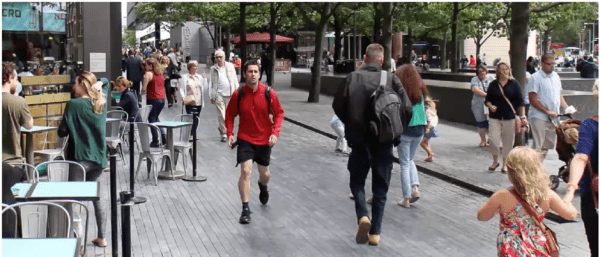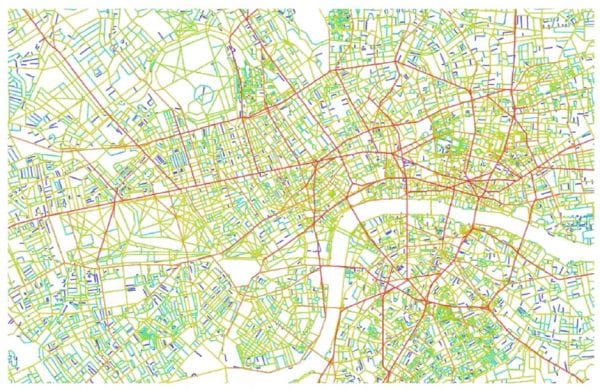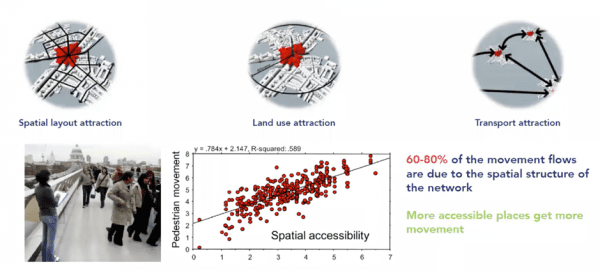In the latest Bayfield Training webinar, Anna Rose, director of Space Syntax Limited, and Natalie Bayfield presented: How to Read a City – Space Syntax for Planning Thriving Places. Anna introduced concepts and tools to understand cities and how to positively impact the customer experience in retail environments. This webinar serves as an introduction to the upcoming course by Space Syntax – Spatial Layout and Retail Performance, on 17th September 2020.
Being able to ‘read a city’ will allow developers and real estate investors to make better investment decisions.
What is Space Syntax?
Space Syntax is a theory and set of tools for the analysis of the built environment, developed at The Bartlett, University College London in the late 1970s. Space Syntax Limited is a commercial spin-off that provides creative expertise in architecture and urban planning. Operating worldwide, we combine global design experience with advanced digital technology. Our science-based and human-focused approach forecasts the social, economic and environmental impacts of development on the lives of people.
People are the lifeblood of a city
Successful cities depend on people coming together in urban space. We have cities because they generate enormous social and commercial value, because of the social and economic interactions. Good design of public spaces is now, more than ever, crucial, because people will only continue to visit if they feel comfortable and safe.

Figure 1 The More London development in Central London
Anna showed The More London development between London Bridge and Tower Bridge in Central London. Space Syntax has helped to design the development in such a way that it is well integrated in its urban context. The space is not only used by its occupants but by a range of different people using the wider area.
Spatial accessibility hierarchy in London
One of the main tools in Space Syntax is a spatial accessibility model. It is an abstraction of the publicly accessible movement network of the city. It represents a collection of segments that are all interconnected. An algorithm calculates the relationships between all these segments. The typical structure that emerges from this algorithm is something that we see in almost all well-established urban systems.

Figure 2 LogChoice RN* IntergrationRN
In this Central London model, one can identify a foreground network – a spiderweb network of the primary roads that connect the centre of the city with the outside (in red). They are the main alignments and they tend to attract activity and movement, movement-dependent land uses like retail, and high numbers of people. Where they interconnect, important transport nodes are located.
The background network is highlighted in the cooler colours, which tend to accommodate more monofunctional usage patterns (residential and commercial). They tend to be quieter areas. An important point is the relationship between both foreground and background networks. In established cities, the spatial structure is well-aligned with the land use structure.
Space Syntax uses this tool not only to understand existing places, but to assess the impact of future development scenarios on spatial structure and urban activity patterns. At its most basic level, this analysis is very time and cost effective.
Integrating multiple urban parameters to model activity patterns
More complex Space Syntax models integrate more urban data sets. A Pedestrian Movement Forecast Model integrates the spatial accessibility model with other data. We build a statistical model to analyse the existing condition of a site and to simulate movement patterns for future scenarios.
Space Syntax work has shown that pedestrian movement correlates well with empirical pedestrian movement data (ca. 60% in most places). We know that in most places ca. 60% to 80% of the movement flows can be explained by the spatial structure of the network. If we add more data, for example related to land use or transportation, we can supplement the analysis and create even better models representing the activity patterns of a project area.

Figure 3 Pedestrian Forecast Modelling
Walkability and land use diversity
Most of the recent work that Space Syntax has been doing integrates a wide range of urban data sets. The information in these models is not always represented at the network level, but on the building plot. For example, an integrated urban model can show the number of different land uses within a 5-minute walk from all buildings in an area. This is called a ‘land use diversity map’.
The analysis can inform the decisions of policy makers who are planning the location and shape of future developments, open spaces and social amenities. It is particularly important in the context of holistic urban planning of sustainable cities and neighbourhoods.

Figure 5 Land use diversity map – Integrated Urban Modelling
The land use diversity map is a proxy for walkability. It can inform planning for cities that help people to have a more sustainable lifestyle: walking, cycling and using public transport.
In conclusion, reading the city both in terms of physical elements and from the perspective of the human experience helps us to create successful places where society thrives.

Author: Sofia Hoch, Project Consultant at Space Syntax
